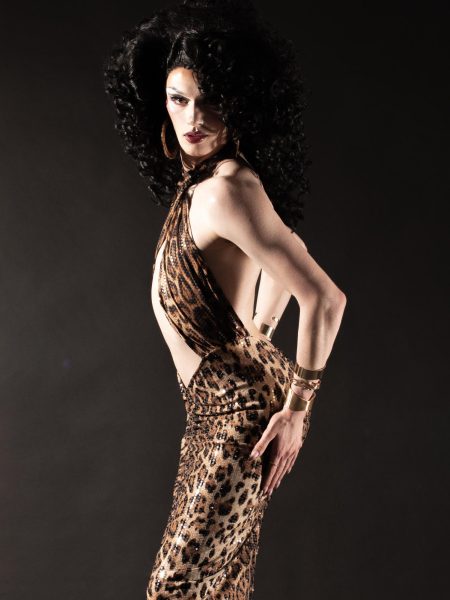black icons who shaped the fashion industry
In the midst of Black History Month, it feels necessary to pay homage to the iconic predecessors who shaped the fashion industry in its earliest stages. It is no secret that the fashion industry wasn’t known for its diversity and inclusivity in the past. With this in mind, it is crucial to give recognition to the names that may have gotten lost over the years. Not to mention many of our past and modern-day trends have been influenced by African American and Black culture which, according to an article by Bricks, includes hoop earrings, acrylic nails, monogram print, sneaker culture and that’s just the start of it.
Dating back to the 1860s, Elizabeth Keckley was born into a family enslaved by her own father. In her lifetime she experienced abhorrent amounts of segregation and injustice. From a young age, she understood that she would have to work 10 times harder than anyone else to live a sustainable life. As told in a biography about the life of Elizabeth (Lizzy) Keckley written by Lina Mann for White House History, at the age of 20 she was forced into pregnancy without her consent and gave birth to her first son, George. She had to provide for her family and quickly realized she could make a little money by offering her dressmaking services. Refusing to let her son grow up enslaved as well, she pleaded to be able to pay for her freedom. After years of rigorous work, she and her son were finally free. Once freed, she was able to start her own dressmaking business and worked with many political elites. Keckley even went on to become the personal seamstress for the first lady at the time, Mary Todd Lincoln. Elizabeth Keckley was also an author and an activist, and she represents an important milestone in fashion history.
A few decades later, Ann Lowe became one of the first highly renowned Black designers. Lowe was born into a long line of dressmakers, but from the 1920s to the 1960s, she began to create a name for herself. She had a brilliant eye for design and her dresses were worn by many women of high-class standing. Each dress she made was one of a kind, just like Ann Lowe herself. She created such a name for herself that she was asked to design the wedding dress as well as the bridesmaid dresses for the marriage between Jacqueline (Jackie) Lee Bouvier and John F. Kennedy. She sadly got little to no recognition for her creation, despite the fact that the dress is “one of the most photographed bridal gowns in history”, as reported by The New Yorker. When asked about the dress, Jackie Kennedy would tell the press it was made by a “colored woman dressmaker” and would refuse to say Ann Lowe’s name. Now her work is displayed in the Met Costume Institute and many modern designers still use her original designs as inspiration.
Come the ‘70s, Willi Smith began to change the fashion game. Smith was known to break rules of fashion and play with unique colors, patterns and silhouettes. A piece about Willi Smith by Cooper Hewit states that his mission within the industry was to use clothing “as a tool for the liberation of stereotypes around race, class, sex, and gender, and bringing art into the mainstream.” He is remarked as one of the pioneers of street couture, or streetwear, which remains wildly popular today. An article titled “The Most Influential Black Designers Of All Time” by Essence ranks Willi Smith at number one. It also notes the outstanding success he achieved in his lifetime. He launched his own clothing line, WilliWear, in 1976 and by the time of his passing in 1987, his line was making around $25 million a year.
Stephen Burrows started to gain traction around the same time. Burrows studied the art of design at the Fashion Institute of Technology in New York. With his unique color blocking, timeless structures and use of jersey material, he quickly made a name for himself. He became the first internationally recognized Black designer, and Fashion History Timeline credits that success to his participation in the “Battle of Versailles” fashion show. Burrows was one of only five Americans invited to showcase their designs in the show. Stephen Burrows is also who we can thank for the invention and popularization of the “lettuce hem,” which was supposedly created by accident. This style of stitching is still incredibly popular, and we may have never had it without the creative genius of Stephen Burrows. He is still alive today and continues to bless us with his designs.
As far as inclusion and diversity within the industry, we still have a long way to go. Becoming educated on the roles people of color have played is a good starting point to make a small change yourself. Without these people and so many others, we would not have the same fashion advancements that we do now. The industry and we as individuals have benefited from Black culture for centuries and it is critical to give recognition where it is due.
Support Student Media
Hi, I’m Grace Avery, the Editor In Chief of A Magazine. My staff and I are committed to bringing you the most important and entertaining news from the realms of fashion, beauty and culture. We are full-time students and hard-working journalists. While we get support from the student media fee and earned revenue such as advertising, both of those continue to decline. Your generous gift of any amount will help enhance our student experience as we grow into working professionals. Please go here to donate to A Magazine.









